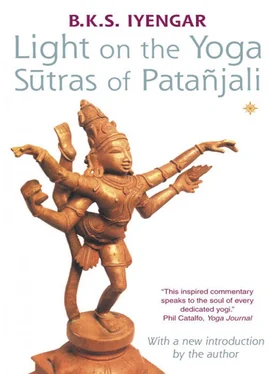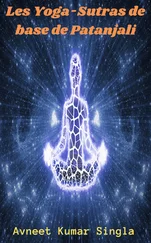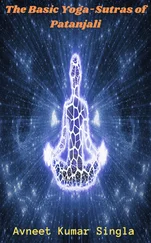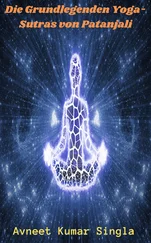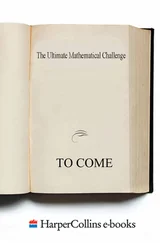Patañjali guides the refined sadhaka in tracing the movements, order and sequence of each action and thought that arises. By retracing his steps through yogic discipline, the sadhaka coordinates his thoughts and actions so that there is no time gap between them. When there is absolute synchronicity of thought and action, the yogi is freed from the material limitations of time and space and this generates extraordinary powers. Patañjali describes these powers as vibhutis , or properties, of yoga.
The properties of yoga are many. Experiencing even one of their extraordinary effects is an indication that the sadhaka is on the right path in his practice of yoga. However, see the next section, ‘Caution’, on page 37.
1 He begins to know the past and future
2 He understands the language of all people, birds and animals
3 He knows his past and future lives
4 He reads the minds of others
5 If necessary, he can define even the precise details of what is in the minds of others
6 He becomes invisible at will
7 He can arrest the senses: hearing, touch, sight, taste and smell
8 He knows the exact time of his death by intuition or through omens
9 He is friendly and compassionate to all
10 He becomes strong as an elephant and his movements are as graceful as a peacock
11 He clearly sees objects near and far, gross and fine, and concealed
12 He knows the working of the solar system
13 He knows the functions of the lunar system and through that, the position of the galaxies
14 He reads the movements of stars from the pole star and predicts world events
15 He knows his body and its orderly functions
16 He conquers hunger and thirst
17 He makes his body and mind immobile like a tortoise
18 He has visions of perfected beings, teachers and masters
19 He has the power to perceive anything and everything
20 He becomes aware of the properties of consciousness
21 By knowing the properties of consciousness he uses consciousness to light the lamp of the soul
22 Divine faculties which are beyond the range of ordinary senses come to him because of his enlightened soul
23 He leaves his body consciously and enters others’ bodies at will
24 He walks over water, swamp and thorns
25 He creates fire at will
26 He hears distant sounds
27 He levitates
28 He frees himself from afflictions at will and often lives without a body
29 He controls nature’s constituents, qualities and purposes
30 He becomes lord of the elements and their counterparts
31 He possesses an excellent body with grace, strength, perfect complexion and lustre
32 He has perfect control over his senses and mind, and their contact with the lower self or the ‘I’ consciousness
33 He transforms body, senses, mind, intelligence and consciousness to utmost sharpness and speed in tune with his very soul
34 He gains dominion over all creation and all knowledge
These powers are extraordinary. The appearance of any one of them indicates that the sadhaka has followed methods appropriate to his evolution. But he should not mistake these powers for the goal of his search. For onlookers they may seem to be great accomplishments, but for the sadhaka they are hindrances to samadhi. Even celestial beings try to seduce the sadhaka. If he succumbs to these temptations, misfortunes overwhelm him.
If a yogi gets carried away by supernatural powers and uses them for fame, he fails in his sadhana. He is like a man who tries to save himself from the wind only to get caught up in a whirlwind. A yogi who attains certain powers and misconstrues them for his goal is caught in their effects and exposes himself to their afflictions. Therefore, Patañjali warns the sadhaka to renounce these accomplishments, so that the gates of everlasting bliss may open for him. He is counselled to develop non-attachment which destroys pride, a cardinal pitfall for those who acquire powers.
Adherence to the practice of yama and niyama , as described in sadhana pada , will ensure that the sadhaka does not get caught up in these powers, or misuse them.
Moment is subjective and movement is objective. Patañjali explains that the moment is the present and the present is the eternal now: it is timeless, and real. When it slips from attention, it becomes movement, and movement is time. As moment rolls into movement, the past and the future appear and the moment disappears. Going with the movements of moments is the future; retraction of this is the past. The moment alone is the present.
Past and future create changes; the present is changeless. The fluctuations of consciousness into the past and future create time. If the mind, intelligence and consciousness are kept steady, and aware of moments without being caught in movements, the state of no-mind and no-time is experienced. This state is amanaskatva. The seer sees directly, independent of the workings of the mind. The yogi becomes the mind’s master, not its slave. He lives in a mind-free, time-free state. This is known as vivekaja jñanam: vivid, true knowledge.
Exalted intelligence is pure and true, untainted and uncontaminated. It distinguishes, clearly and instantly, the difference between similar entities, without analysing them according to rank, creed, quality and place.
This intelligence is true, pure and clean, as is the very soul. The yogi who possesses it is free from pride and prejudice. His intelligence and consciousness now rise to the level of the soul. As honey tastes the same from whichever side of the honeycomb it is taken, so, in the yogi, the body cells, senses, mind, intelligence, consciousness and conscience equally reflect the light of the soul. All parts of the seer appear as the soul. This is kaivalya. It comes when the powers which attract the misguided, but distract the yogi’s consciousness, are renounced.
Kaivalya means exclusiveness, or eternal emancipation. It is release from karma: the consequences and obligations of our actions. Kaivalya is an absolute, indivisible state of existence. In it, the yogi is stripped of thoughts, mind, intellect and ego, and freed from the play of the gunas of nature, sattva, rajas and tamas. He becomes a gunatitan , a pure, flawless person.
In vibhuti pada , Patañjali describes the supernatural powers that attend such exalted yogis and how the renunciation of these powers results in kaivalya: the crowning end of the yogic sadhana , a state of fullness of the soul and of unique aloneness.
This chapter, Kaivalya pada , is impressive and exhaustive. One of its main themes is that the content of consciousness is pure, absolute and divine, provided it is unsullied by action, be it white ( sattvic ), grey ( rajasic ) or black ( tamasic). The absolute nature of consciousness is to be realized by propitious birth, spiritual fervour and meditation. The cleansing transformation of consciousness liberates life-energy which accelerates the process of self-evolution. Progressively, one disentangles oneself from life’s preoccupations with dharma , duty; artha , means of livelihood; and kama , worldly enjoyment. This transcendence leads to freedom, or moksa. Consciousness, released from the attributes of nature, dissolves in the soul, purusa.
Читать дальше
